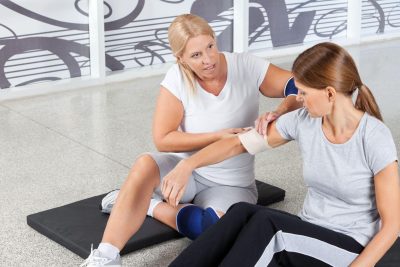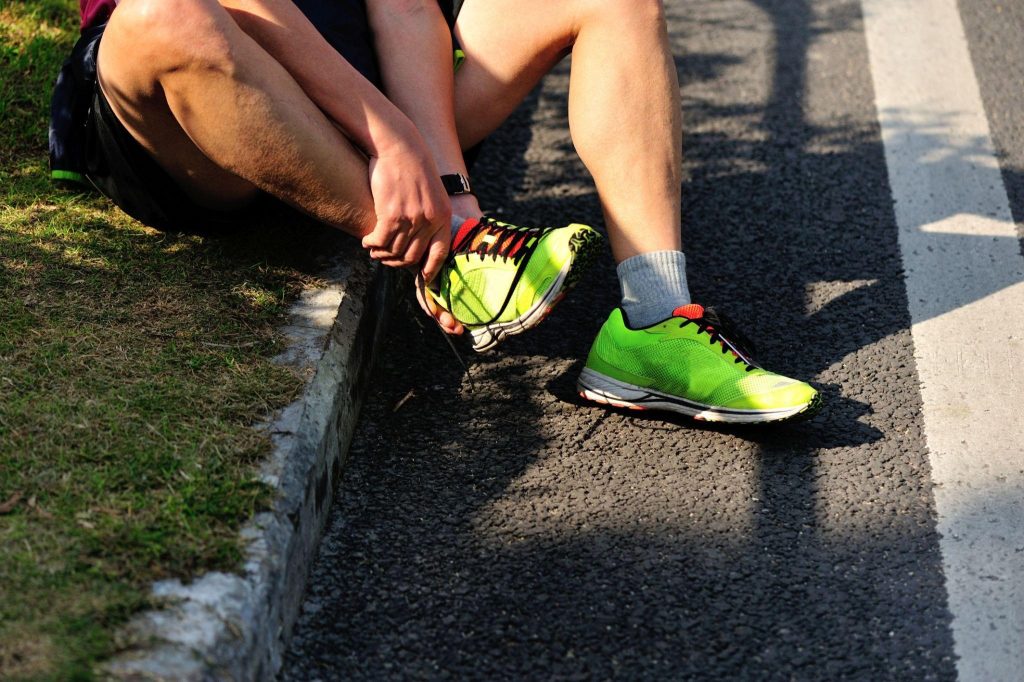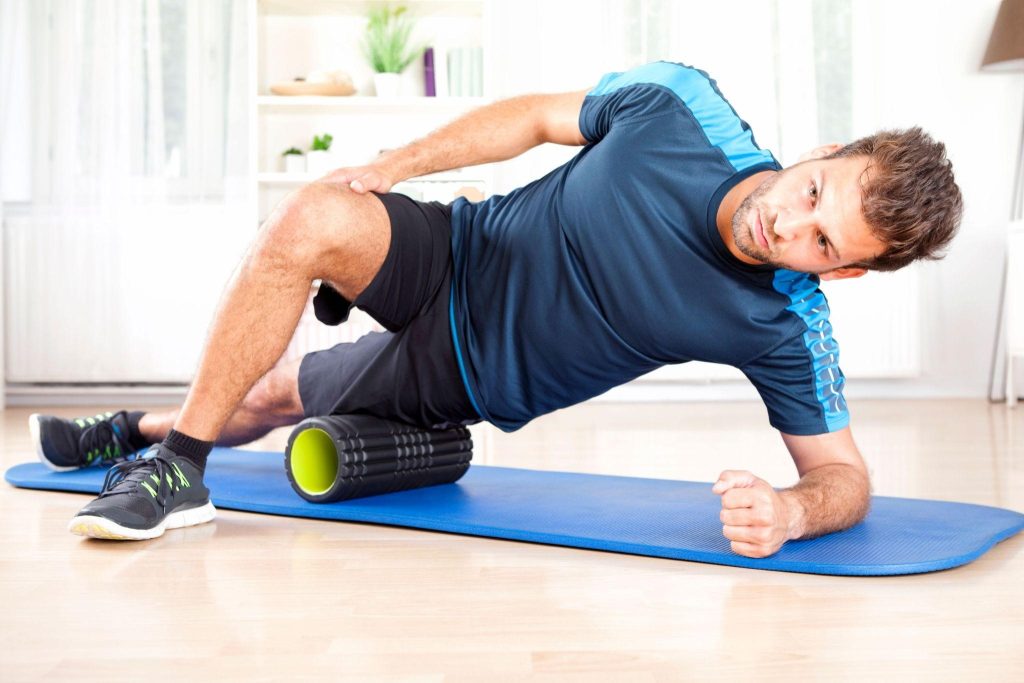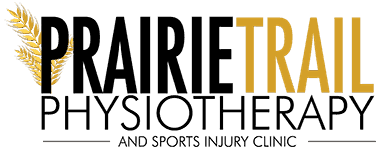Are you dealing with a sports injury? Whether it’s a recent occurrence or an old injury that’s been bothering you, learning about the recovery process is essential.
It’s inevitable as an athlete that you will experience some kind of sports injury at some point. No matter how attentive you are, something is bound to happen. And when it does, it’s important to know how to properly recover to get back to your sport sooner rather than later.
If you find yourself sidelined with a sports injury, don’t worry – there is plenty you can do to speed your recovery and get back in the game.
This guide will teach you everything you need to know about sports injury rehabilitation, from basics like rest and ice packs to more advanced treatments like physical therapy.
Read on and follow these tips, and you’ll be on your way to feeling better in no time!

What Is Sports Injury All About
A sports injury can be defined as any damage or harm inflicted on the body due to participating in a sport or physical activity. It can result from a number of things, such as improper form while exercising, not warming up properly or overuse of a particular muscle. Whatever the cause, a sports injury can prevent you from your favorite activities and leave you feeling frustrated.
It can be a minor annoyance, such as a sprain or bruise, or severe, such as a fracture or concussion. In most cases, sports injuries are preventable if the proper precautions are taken.
Sports injuries usually heal on their own over time and rest; however, there are some steps you can take to lessen the healing time and minimize the pain.
Most Common Sports Injuries

Different types of sports injuries exist, but some are more popular than others. The most common are:
Running Injury
Sports injuries are a normal occurrence and can result in various injuries. If you are a runner, you may be familiar with the term “runner’s knee.” This is a general term used to describe pain around or behind the kneecap. Runner’s knee can be caused by several things, such as overuse, muscle imbalance, or poor alignment. The most frequent running injuries are ankle sprains, achilles tendonitis, and plantar fasciitis.
If you’re experiencing knee pain while running, stop immediately and seek medical attention. There are many ways to recover from a sports injury, and the most crucial part is to be patient and listen to your body.
Depending on the severity of your injury, you may need crutches, a brace, or surgery to recover fully. In most cases, rehabilitation will be necessary in order to restore strength and range of motion.
Related Article: RUNNING INJURIES – COMMON TRAINING ERRORS
Shoulder Injuries
Shoulder injuries can be frustrating and often require patience during the healing process. They can occur from a direct impact or overuse. Symptoms of a shoulder injury include swelling, pain, and difficulty moving the shoulder.
The shoulder is a complex joint with several muscles and tendons surrounding it. This makes it susceptible to various injuries, including strains, sprains, dislocations, and rotator cuff tears.
Most shoulder injuries can be treated with a combination of rest, ice, and physical therapy. Physiotherapy can help you regain strength and range of motion in your shoulder. Surgery may be necessary if the injury is severe.
Hamstring Injury
Hamstring injuries are often seen in sports and can often take a while to heal properly. Your hamstring muscles are located at your thighs’ back and help you extend your leg. A hamstring injury can occur when this muscle is overstretched or torn. Symptoms include pain, swelling, bruising, and difficulty walking.
Swelling and pain can occur in the back of the thigh and make it difficult to walk or run. If you suspect that you are injured, it is important to seek medical attention right away.
Ankle Sprains
An ankle sprain is a fairly normal injury, particularly among athletes. The ankle joint is susceptible to injury because it is a weight-bearing joint subjected to stress.
Ankle sprains and tears occur when the ankle joint is twisted or turned beyond its normal range of motion, causing the ligaments that protect the joint to stretch. Symptoms of an ankle sprain include pain, swelling, and difficulty walking.
The simplest way to prevent ankle sprains is to wear supportive shoes and exercise caution when participating in sports or other activities involving twisting or turning the ankle.
Repetitive Strain Injuries
Anyone who participates in a sport that involves repetitive motions is at risk for developing an RSI, but athletes who play sports like golf, tennis, and swimming are especially vulnerable.
A sprain is an injury to the ligaments, which are tough bands of tissue that connect bones. The most obvious example of a sprain is when you twist or turn your ankle too much, and it swells up or tears one or more ligaments.
RSIs are triggered by repeating the same motion over and over again, which can lead to inflammation and stiffness in the muscles and joints. Some of the most common RSIs include carpal tunnel syndrome, achilles tendinitis, and tennis elbow.
Related Article: HOW TO PREVENT RSI’S
 Shin Splints
Shin Splints
Shin splint is a condition that is common among people who participate in sports. This condition is caused by inflammation of the tissues located on the shin bone. Inflammation, swelling, and tenderness in the shin area can result from overuse of the shin muscles. It can cause severe pain and make it difficult to walk or run.
Shin splints can be prevented by warming up before exercise, slowly increasing the intensity and duration of workouts, and wearing appropriate shoes.
Treatment typically consists of rest, ice, compression, and elevation (RICE). NSAIDs may also be prescribed to reduce inflammation. If left untreated, shin splints can lead to more serious injuries such as stress fractures.
5 Secrets To Recovering Like A Pro Athlete
When it comes to recovering from sports injuries, many people think that professional athletes have a distinct advantage. However, this is not always the case. In fact, there are a few secrets that professional athletes use to speed up their recovery time that anyone can use.
Listen to the Body – if Something Doesn’t Feel Natural, Take a Break
When you’re injured, it’s important to listen to your body and go at your own pace. If something doesn’t feel right, take a break. Trying to push yourself too hard can only lead to further injury and a longer recovery time. Be patient and follow your doctor’s orders, and you’ll be back in the game in no time.
In certain cases, you may have to take time off from sports due to the severity of the problem. Follow your doctor’s instructions and be patient as you recover. You’ll be back out on the field in no time.
Ice and Heat Therapy – a Key for Speeding Up the Healing Process
Both ice and heat therapy are critical tools for speeding up the healing process when it comes to sports injuries.
Ice therapy is used to alleviate inflammation and swelling, while heat therapy helps to increase blood flow and improve flexibility. It’s better to use ice and heat therapy in combination rather than relying exclusively on one or the other.
Here are some tips for using ice and heat therapy effectively:
- For ice therapy, use an ice pack or a bag of frozen vegetables wrapped in a towel. Place the ice pack in the injured area for 10-15 minutes, several times a day.
- For heat therapy, use a heating pad, hot water bottle, or microwaveable gel pack. It is best to apply heat to the injured area for 10-15 minutes, only once or twice daily.
Foam Rollers Are Your Friend – Use Them Every Day to Help Loosen Up Tight Muscles
 When you’re recovering from a sports injury, using a foam roller can be really helpful. Foam rollers are cylinders of dense foam that you can use to massage your muscles. Use them every day to help loosen up tight muscles and speed up the healing process.
When you’re recovering from a sports injury, using a foam roller can be really helpful. Foam rollers are cylinders of dense foam that you can use to massage your muscles. Use them every day to help loosen up tight muscles and speed up the healing process.
They’re perfect not only for loosening up tight muscles but also for relieving tension. This will help you get back to your sport faster and also help prevent future injuries.
Stay Hydrated Before, During, and After Runs
A crucial thing to remember when recovering from a sports injury is to stay hydrated. Whether you are running or not, it is essential to drink plenty of water before, during, and after your activities.
When you’re dehydrated, your body can’t perform as well as it could be. You’re also more prone to getting injured if you don’t drink enough water. Dehydration can make your injury worse, so be sure to keep hydrated no matter what.
Perform Stretching and Strengthening Exercises, Under Supervision
When you suffer a sports injury, it is vital to take the necessary steps to ensure a full and proper recovery. This often starts with performing stretching and strengthening exercises under the supervision of a trained professional. Stretching and strengthening exercises help improve joint mobility and muscle strength.
When performing these types of exercises, it is often helpful to consult with a physical therapist because therapists often use equipment that facilitates the process.
How to Prevent Sports Injuries From Happening in the First Place
Sports injuries can sideline even the fittest athletes, interrupt training, and sometimes cause long-term problems. Proper preparation can help reduce your risk of sports injuries.
By keeping in good physical shape, you reduce the risk of sports injury. To do this, follow a workout routine that includes both cardiovascular and strengthening exercises. If you’re not sure how to get started on a fitness program, talk to your doctor or other healthcare professionals. Maintain a schedule of at least three to four 30-minute workouts each week.
Conditioning exercises that strengthen leg muscles, such as squats and lunges, can help you run faster and jump higher. Concentrate on strengthening your legs, ankles, feet and core (lower back). By strengthening the feet and lower legs muscles, you’ll be less likely to get stress fractures.
How Long Does It Take for a Sports Injury to Heal Completely
Generally, a sports injury will take several days to a few weeks to heal completely. However, some may take longer than others, depending on the severity of the injury. In most cases, following the proper steps for treatment and healing will help speed up the process.
Different types of sports injuries may take longer to heal than others. A hairline fracture, for example, will take longer than a broken collar bone because the bones in your body need time to mend and realign together again. Also, minor cuts and bruises will usually heal faster than an injury that requires stitches because the latter requires more time for the cut to actually close and scab over.
The person’s age with the sports injury also affects how fast they recover. Often, young people tend to heal faster than older athletes because their bones, muscles and blood vessels are more elastic and resilient than those that belong to an aging adult.
How Can Physiotherapy Help With the Rehabilitation Process
Physiotherapy is an integral part of the rehabilitation process after a sports injury. It can help expedite the healing process and reduce the chances of getting injured again.
Physiotherapy involves a range of treatments, including massage, heat treatment, and exercise. It can help to improve flexibility, strength, and mobility. It can also help to reduce pain and swelling.
If you have suffered a sports injury, it is important to seek physiotherapy treatment as soon as possible. This will help you to get back to your normal activities as quickly as possible.
In addition, physiotherapists can provide you with exercises to strengthen your injured area and help prevent future injuries.

